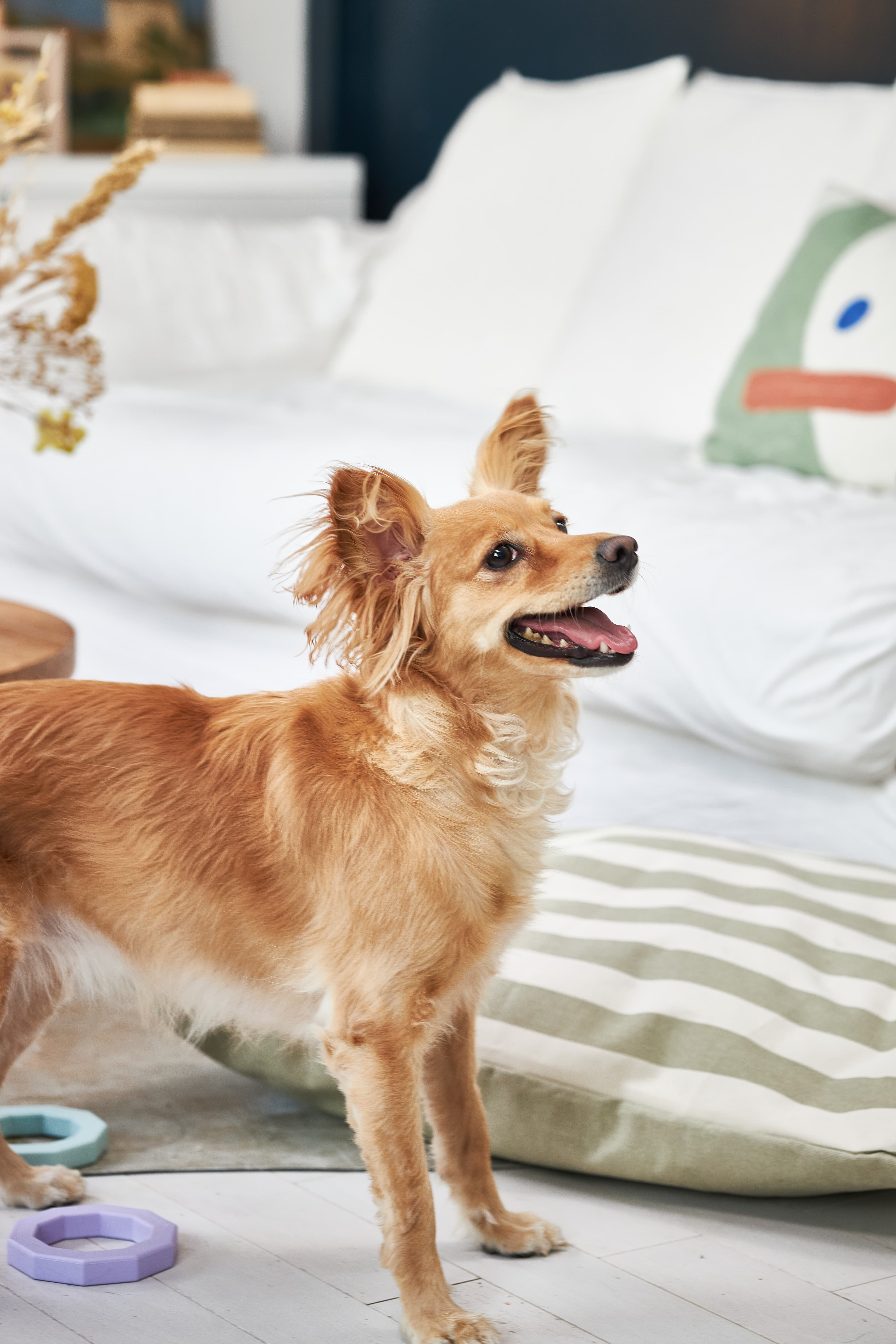Learn about separation anxiety in dogs
What is separation anxiety?
Being with others is a natural part of a social animal like a dog. It has evolutionarily protected individuals from danger by allowing them to better defend themselves, but also allowed for better survival by helping them hunt, feed and care for their young. Thus, being separated from your group is life-threatening and explains much of the emotion our dogs feel when left alone. Studies have shown that up to 50% of family dogs can suffer from separation anxiety.
Separation anxiety is a problem that occurs when the dog is afraid of being or being left alone. It appears when they see their owner leaving or when they are left alone. Sometimes the owner may not even be aware of the problem as the dog only suffers when left alone.
What are the signs of separation anxiety?
Behaviors that can be displayed when the dog is left alone and that are signs of separation anxiety can be:
The dog likes to sleep by the front door or on your feet to make sure you or someone else doesn't leave the home.
The dog follows you everywhere in the house
The dog may become anxious when you are preparing to leave, packing a bag or getting ready for work
The dog barks, howls or whines
The dog chews objects and performs other destructive behaviors such as destroying the furniture
The dog pees and/or poops inside
The dog scratches or digs at doors, windows or other entrances or exits
The dog is anxious and walks back and forth
Dog is panting and/or drooling
Dog is completely still and waiting at the doorway
The dog runs between the windows or sits in a window to keep an eye on who is coming
Dog becomes over excited when you return home
Your dog's stress levels are higher after you've been away - you may notice this on your walks
The important thing to keep in mind is that it CAN be these behaviors. However, these behaviors don't automatically mean that the dog has separation anxiety and it can also show other behaviors.
What causes separation anxiety?
Separation anxiety can be caused by several factors. Both genetics and environment have an impact, but also early experiences such as premature separation from the mother, being left alone for a long time as a puppy or not being trained to be alone at home. Specific events also seem to trigger these problems. It could be some kind of change such as a change in work schedule, the family moving or the dog being relocated. However, there is no evidence that dogs that sleep on the bed or couch, have a strong bond with their owner, or accompany their owner everywhere are more likely to develop separation anxiety.
Studies in other species have shown that young that are not cared for at an early age are more nervous for the rest of their lives and those without a mother to care for them have difficulty with separation later in life. It has also been shown that the early environment of dogs has long-lasting effects on their behavior and how they deal with stressful situations.
So there are many things that affect whether or not a dog develops separation anxiety, but if we think about trying to make the dog as safe as possible, we're at least doing as much as we can to prevent the problem. If your dog has separation anxiety, read on about how to train it and remember that it's always good to get help from a good trainer who can tailor a training plan for you and your dog.






